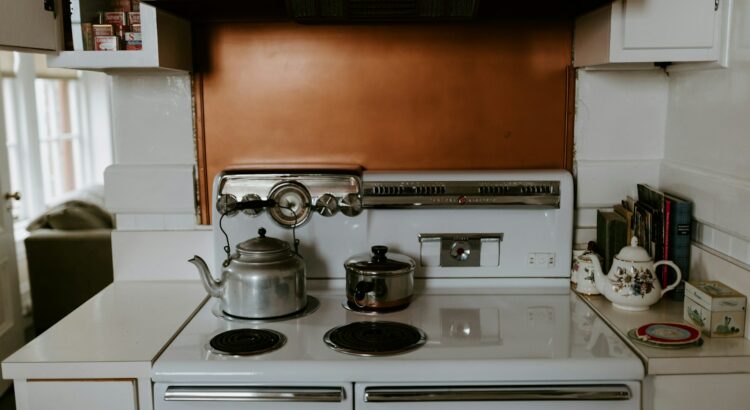Hey there, kitchen enthusiasts! Do you find yourself dealing with stubborn grease stains on your stovetop? It’s a universal struggle that many of us face when trying to keep our cooking space looking tidy and inviting. But fear not, because in this article, we’re going to explore some top tips and tricks for removing grease and keeping your stovetop spotless. So grab your apron and let’s dive into the world of grease removal!
Table of Contents
- Start with a Daily Wipe-Down Routine
- Choose the Right Cleaning Agents
- Employ the Power of Baking Soda
- Utilize Vinegar for Tough Stains
- Embrace the Steam Cleaning Method
- Invest in a Good Quality Scraper
- Consider a Degreasing Dish Soap
- Make Use of Citrus Power
- Try Non-Toxic Homemade Cleaners
- Maintaining Protective Stovetop Coatings
- Questions & Answers for Grease Removal: Keeping Your Stovetop Spotless
- The Conclusion
Start with a Daily Wipe-Down Routine
Maintaining a clean stovetop and keeping grease at bay is essential to ensuring your kitchen remains a place of cleanliness and efficiency. One of the best ways to achieve this is by implementing a daily wipe-down routine. By taking just a few minutes each day to tackle grease and grime, you can keep your stovetop spotless with minimal effort.
To start your daily wipe-down routine, you’ll need a few simple supplies:
- Microfiber cloth
- Multipurpose cleaner
- Dish soap
- Warm water
Begin by removing any loose debris from the stovetop surface. Next, spray a small amount of multipurpose cleaner onto the surface and use the microfiber cloth to wipe away any visible grease and spills. For tougher grease spots, create a solution of dish soap and warm water, then use the cloth to scrub away the grime.
In addition to your daily wipe-down routine, it’s important to regularly clean the stovetop burners and grates. Remove the burners and grates from the stovetop and soak them in a mixture of hot water and dish soap. Use a brush to scrub away any built-up grease and food residue. Once clean, dry the burners and grates thoroughly before placing them back on the stovetop. This step will ensure that your stovetop not only looks clean, but also functions at its best.
By incorporating a daily wipe-down routine and regularly cleaning the burners and grates, you can effectively remove grease and keep your stovetop sparkling clean. With minimal effort, your kitchen will remain a welcoming space for cooking and entertaining, free from the frustration of grease buildup.
Choose the Right Cleaning Agents
When it comes to keeping your stovetop spotless and free of grease, choosing the right cleaning agents is key. There are countless options available, but not all of them are suitable for tackling tough grease stains. To ensure your stovetop remains sparkling clean, here are some important tips to keep in mind when selecting the best cleaning agents.
First and foremost, always opt for cleaning agents specifically designed for grease removal. These products are formulated to break down tough grease and grime, making it easier to clean your stovetop. Look for cleaners that are labeled as “grease-fighting” or “degreaser” for maximum effectiveness.
When selecting a cleaning agent, consider the type of stovetop you have. Different surfaces may require different cleaning agents to prevent damage. For example, glass stovetops may require a gentler cleaner to avoid scratching, while stainless steel stovetops may benefit from a more abrasive scrubbing agent.
Recommended Cleaning Agents:
- Mrs. Meyer’s Clean Day Multi-Surface Everyday Cleaner - This eco-friendly cleaner is great for daily grease removal and leaves a fresh, lemon verbena scent behind.
- Clorox Clean-Up Cleaner + Bleach – This powerful cleaner is perfect for tackling stubborn grease stains and disinfecting your stovetop.
In addition to choosing the right cleaning agents, it’s also important to follow the manufacturer’s recommendations for application. Some cleaning agents may require you to let the product sit for a few minutes before wiping it off, while others may require rinsing with water after use.
By following the instructions carefully, you can ensure maximum grease removal and a clean stovetop every time. Remember, a little goes a long way with these powerful cleaners, so use sparingly and always ventilate the area.
Employ the Power of Baking Soda
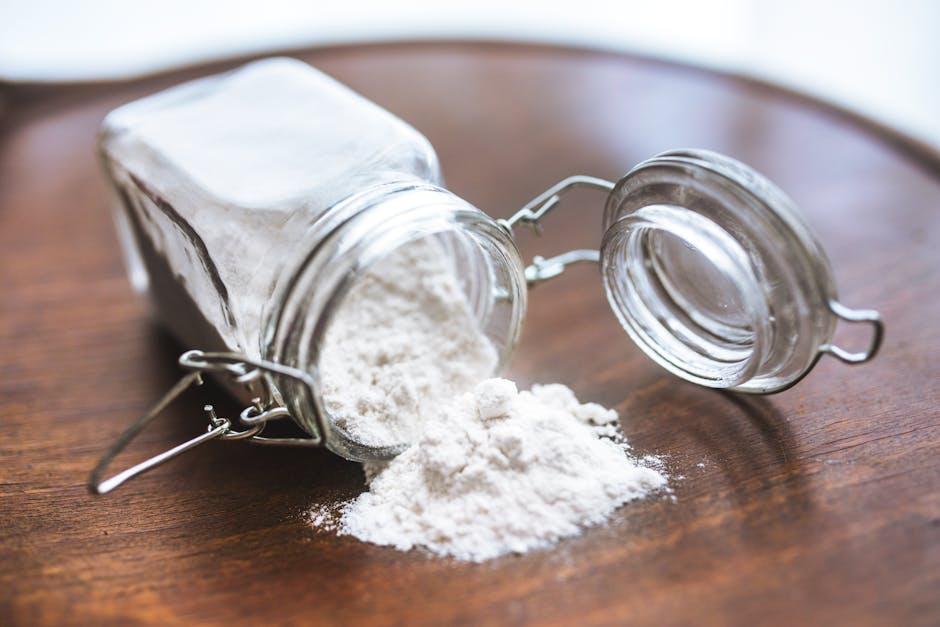
When it comes to grease removal and keeping your stovetop spotless, baking soda is a game changer. This natural, non-toxic ingredient is not only effective at cutting through tough grease, but it’s also gentle on your stovetop surface. Here’s how you can harness the power of baking soda for a clean stovetop:
Baking Soda Paste
- Create a thick paste by mixing baking soda with water. The consistency should be similar to toothpaste.
- Apply the paste to the greasy areas on your stovetop, focusing on the most stubborn spots.
- Let the paste sit for 10-15 minutes to allow the baking soda to work its magic on the grease.
Scrubbing with Baking Soda
- Sprinkle baking soda directly onto the stovetop surface.
- Use a damp sponge or microfiber cloth to gently scrub the baking soda into the grease, using circular motions.
- Continue scrubbing until the grease begins to lift from the surface.
Note: Avoid using abrasive scrubbers that could scratch the stovetop.
Rinsing and Drying
- Once the grease has been lifted, use a clean, damp cloth to wipe away the baking soda residue.
- Follow up with a dry cloth to buff the stovetop to a shine.
- Your stovetop should now be spotless and free of grease, thanks to the power of baking soda!
By employing the power of baking soda for grease removal, you can keep your stovetop looking its best without relying on harsh chemicals. Not only is baking soda effective, but it’s also a budget-friendly and eco-friendly solution for cleaning your kitchen appliances. Plus, the gentle abrasive nature of baking soda ensures that it won’t damage the surface of your stovetop, making it a safe and reliable choice for all types of stovetops.
Regular maintenance with baking soda can help prevent the buildup of grease and grime on your stovetop, keeping it sparkling clean and extending its lifespan. For a natural, effective, and environmentally friendly way to tackle grease removal and maintain a spotless stovetop, look no further than the power of baking soda.
Utilize Vinegar for Tough Stains
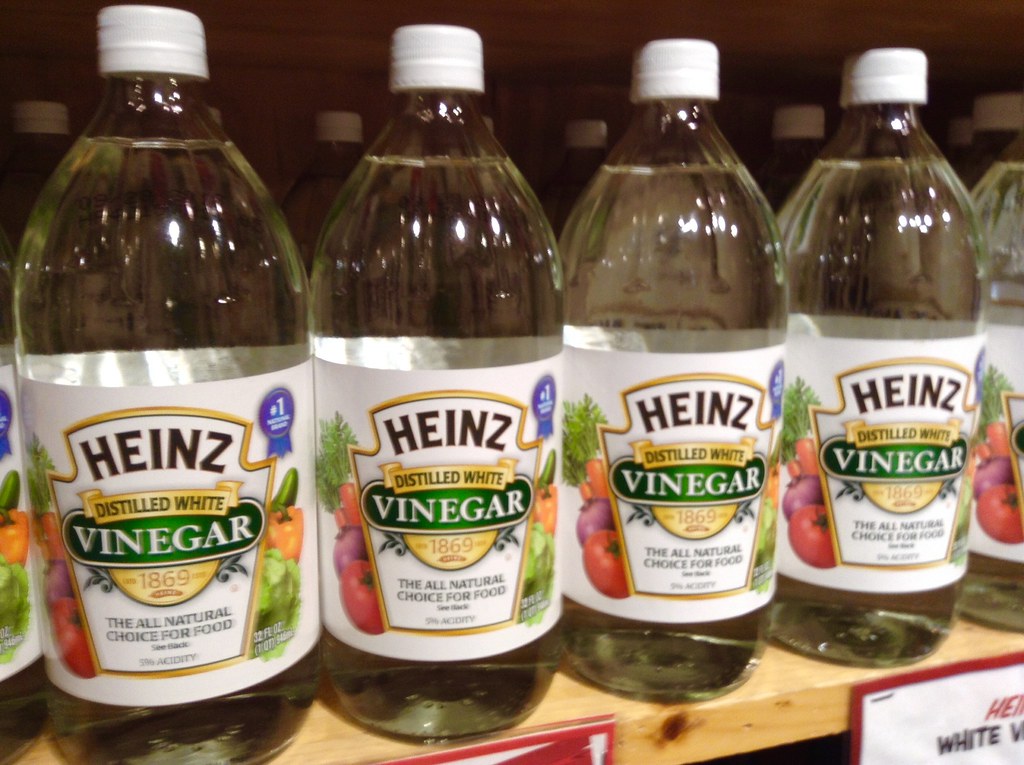
When it comes to keeping your stovetop spotless, grease removal is essential. Fortunately, vinegar can be a powerful tool for tackling tough stains and keeping your stovetop in pristine condition. Vinegar is a natural, affordable, and effective solution for cutting through grease and grime, making it a must-have in your cleaning arsenal.
To utilize vinegar for grease removal, start by mixing equal parts of white vinegar and water in a spray bottle. Spray the solution directly onto the greasy areas of your stovetop and let it sit for a few minutes to penetrate the stains. This will help loosen the grease and make it easier to wipe away. For stubborn stains, you can also sprinkle baking soda on top of the vinegar/water solution to create a powerful, natural scrub that will help cut through the grease.
After allowing the vinegar solution to work its magic, use a clean microfiber cloth or sponge to wipe away the grease and grime. The acidity of the vinegar helps to break down the grease, while the water provides a gentle, non-toxic way to clean your stovetop. For particularly tough stains, you may need to repeat this process a few times, but with persistence, you’ll be amazed at the results!
One of the best things about using vinegar for grease removal is that it’s safe, eco-friendly, and won’t leave behind any harmful chemical residues on your stovetop. Plus, the natural acidity of vinegar makes it an effective degreaser that can tackle even the most stubborn stains. Say goodbye to harsh chemical cleaners and hello to the power of vinegar for keeping your stovetop spotless!
Embrace the Steam Cleaning Method
Cleaning your stovetop can be a daunting task, especially when it comes to removing tough grease stains. Thankfully, the steam cleaning method offers a simple and effective solution to keep your stovetop spotless. By embracing this cleaning technique, you can say goodbye to stubborn grease buildup and hello to a sparkling clean stovetop.
Step 1: Prep Your Stovetop
Before you begin steam cleaning, make sure to remove any loose debris and food particles from the stovetop. Wipe the surface with a damp cloth to ensure it’s free of any surface dirt. This step will ensure that the steam can penetrate through the grease and grime more effectively.
Step 2: Apply Steam
There are several ways to apply steam to your stovetop. You can use a handheld steam cleaner, a steam mop, or even a simple pot of boiling water. Whichever method you choose, direct the steam onto the greasy areas of the stovetop and let it sit for a few minutes to loosen the grease.
Step 3: Wipe Away the Grease
Once the grease has been loosened by the steam, use a clean microfiber cloth or sponge to wipe away the grime. The heat from the steam will have softened the grease, making it easier to remove. For stubborn stains, you may need to repeat the steam application and wiping process.
Step 4: Final Touches
After removing the grease, give your stovetop a final wipe down with a mild cleaning solution to remove any remaining residue. This will leave your stovetop looking clean and shiny.
Steam Cleaning Method Pros and Cons
| Pros | Cons |
|---|---|
| Environmentally friendly | May not be as effective on extremely tough grease |
| Does not require harsh chemicals | Can be time-consuming for larger stovetops |
| Safe for most stovetop surfaces | Requires some initial investment for a steam cleaner or mop |
The steam cleaning method offers a safe, eco-friendly, and effective way to remove grease from your stovetop. By following these simple steps, you can keep your cooking area clean and hygienic without the need for harsh chemicals. Embrace the power of steam cleaning and say goodbye to grease buildup for good!
Invest in a Good Quality Scraper
Keeping your stovetop spotless is essential for efficient cooking and a clean kitchen. One of the best investments you can make for grease removal is a good quality scraper. Here’s why and how to choose the right one for your needs.
Why ?
A good quality scraper is an essential tool for removing stubborn grease from your stovetop. Here are some reasons why you should consider investing in one:
- Efficiency: A good quality scraper will make grease removal a breeze, saving you time and effort in the kitchen.
- Durable: Quality scrapers are built to last, meaning you won’t have to replace them frequently.
- Effective: A good quality scraper will make quick work of even the toughest grease, leaving your stovetop sparkling clean.
Choosing the Right Scraper
When choosing a scraper for grease removal, consider the following factors:
- Material: Look for a scraper made of stainless steel or another durable material that won’t corrode or rust.
- Handle: A comfortable, ergonomic handle will make grease removal less of a chore.
- Blade Size: Consider the size of your stovetop and choose a scraper with a blade that’s the right size for efficient cleaning.
Investing in a good quality scraper is essential for keeping your stovetop spotless. Look for a durable, effective tool with the right materials and handle for your needs, and grease removal will become a quick and easy task in your kitchen.
Consider a Degreasing Dish Soap
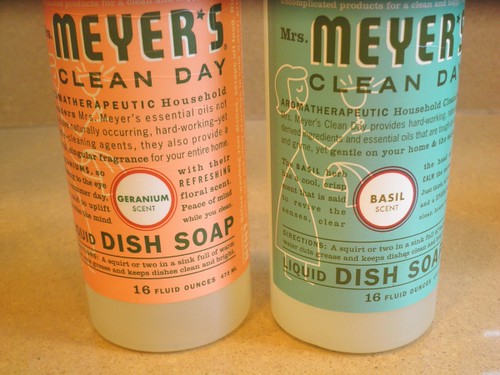
When it comes to keeping your stovetop spotless, grease removal is a key component. One of the best ways to ensure that your stovetop stays clean and grease-free is to use a degreasing dish soap. This type of dish soap is specifically formulated to cut through tough grease and grime, making it the perfect choice for cleaning your stovetop.
Why for grease removal?
- Degreasing dish soaps are specially designed to break down and remove stubborn grease and grime.
- They are effective in cutting through tough, baked-on grease, making them ideal for keeping your stovetop clean.
- Many degreasing dish soaps are also gentle on surfaces, so you can use them without worrying about damaging your stovetop.
How to use degreasing dish soap for grease removal on your stovetop:
- Apply a small amount of degreasing dish soap directly to the greasy areas of your stovetop.
- Using a damp sponge or cloth, gently scrub the soap into the grease, focusing on any tough, baked-on areas.
- Rinse the stovetop thoroughly with clean water to remove the soap and any loosened grease.
- Dry the stovetop with a clean, dry cloth to reveal a spotless, grease-free surface.
Make Use of Citrus Power
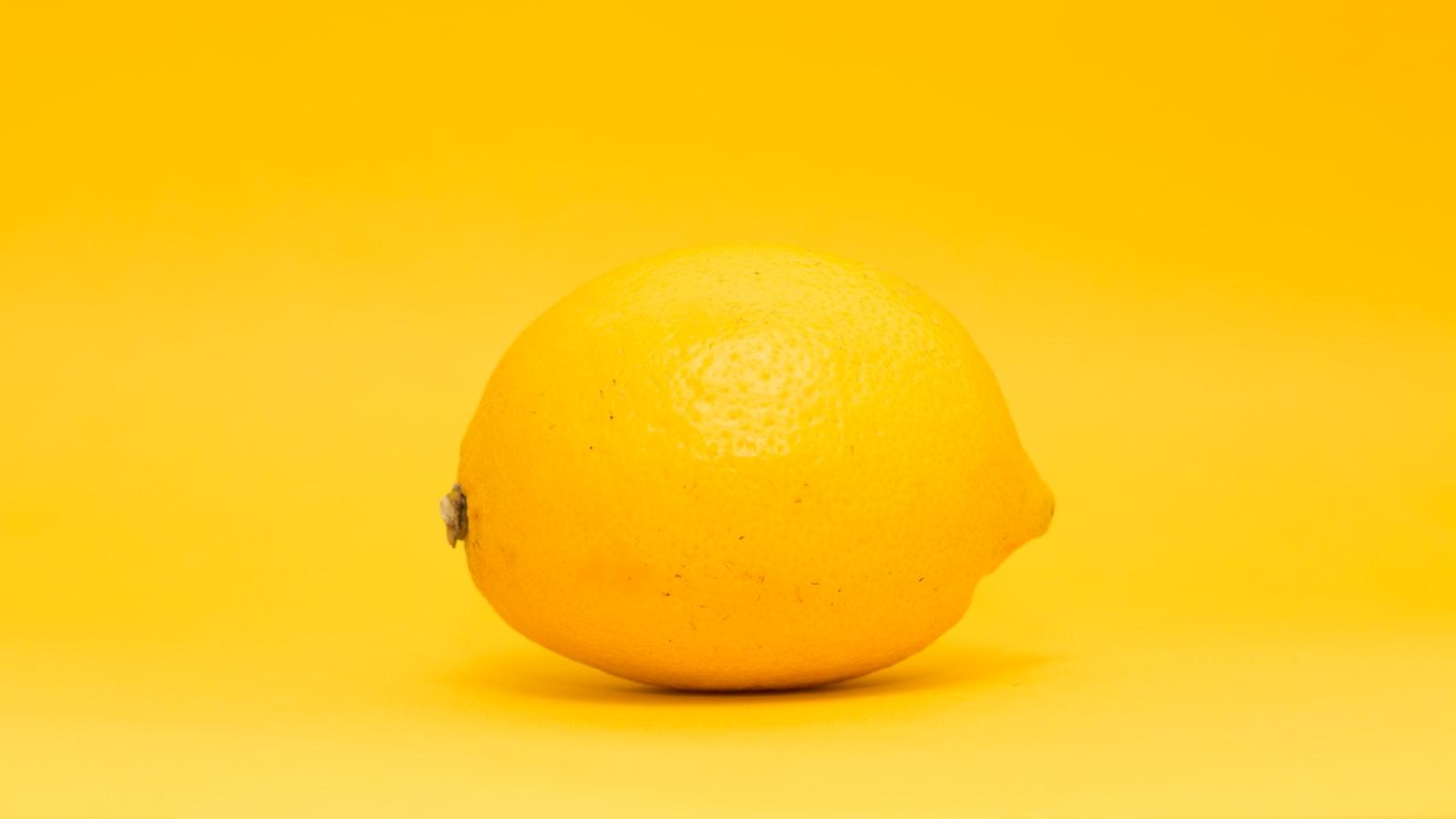
Citrus fruits like lemons, limes, and oranges are not only refreshing in drinks but can also be powerful tools for grease removal. Their natural acidity cuts through grease and grime on your stovetop, leaving it sparkling clean. Here’s how to for a spotless stovetop:
- Begin by slicing a lemon or lime in half.
- Squeeze the juice from the citrus fruit onto the greasy areas of the stovetop.
- Use the citrus rind to scrub the surface, applying pressure to remove the grease.
- For tougher grease spots, sprinkle a little salt on the area before scrubbing with the citrus fruit.
- Wipe the stovetop clean with a damp cloth to remove any remaining residue.
By harnessing the power of citrus, you can effectively remove grease from your stovetop without relying on harsh chemicals. Plus, the fresh, clean scent of citrus will linger in your kitchen, adding an extra bonus to your cleaning routine.
Try Non-Toxic Homemade Cleaners
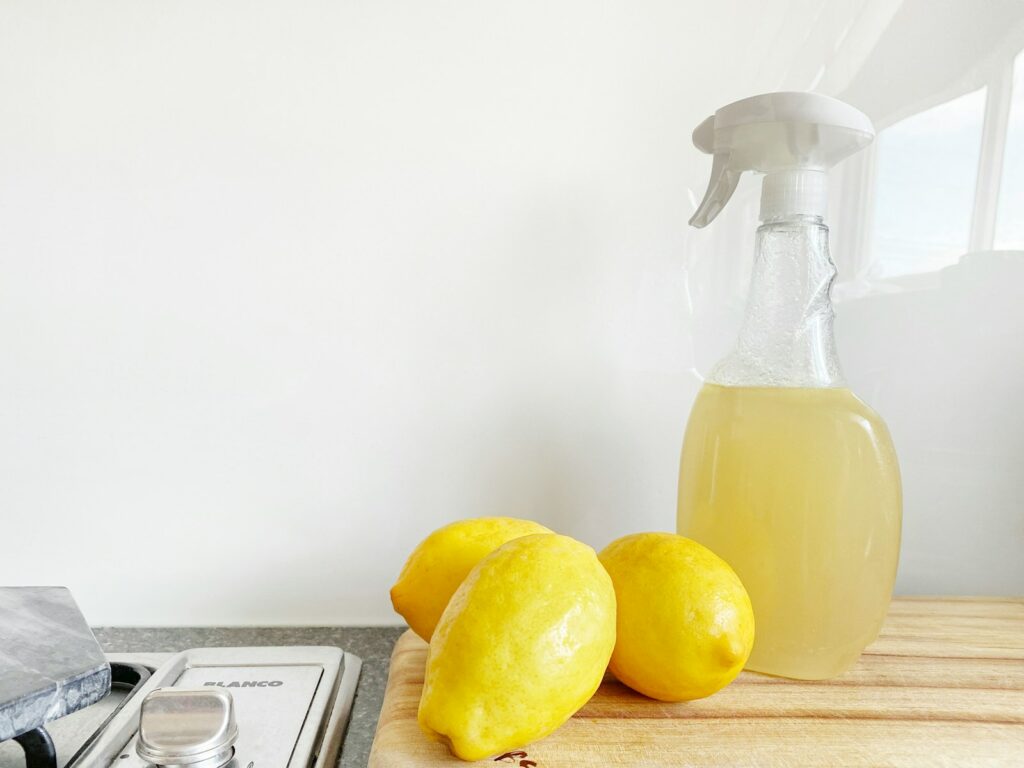
When it comes to keeping your stovetop spotless, removing grease can be one of the toughest challenges. Fortunately, there are several non-toxic homemade cleaners that can help you tackle this task effectively.
Here’s how to make and use them:
Vinegar and Baking Soda: Create a paste by mixing equal parts of vinegar and baking soda. Apply the paste to the greasy areas of your stovetop and let it sit for 15-20 minutes. Then, scrub the area with a damp cloth or sponge. The vinegar’s acidity will help dissolve the grease, while the baking soda’s abrasive texture will help scrub it away.
Lemon Juice and Water: Mix one part lemon juice with two parts water in a spray bottle. Spray the solution onto the greasy areas of your stovetop and let it sit for a few minutes. Then, wipe the area with a clean cloth or sponge. The citric acid in the lemon juice will cut through the grease, leaving your stovetop clean and shiny.
Castile Soap and Essential Oils: Mix a few drops of castile soap with water in a spray bottle and add a few drops of your favorite essential oil for a pleasant scent. Spray the solution onto the greasy areas of your stovetop, let it sit for a few minutes, and then wipe it clean with a damp cloth. The castile soap’s grease-cutting properties will help to remove the grease, while the essential oil will leave a refreshing fragrance behind.
Using non-toxic homemade cleaners for grease removal not only helps to keep your stovetop spotless, but also reduces the exposure to harmful chemicals. Give these homemade cleaners a try and say goodbye to stubborn grease stains on your stovetop. Your kitchen will thank you for it!
Maintaining Protective Stovetop Coatings
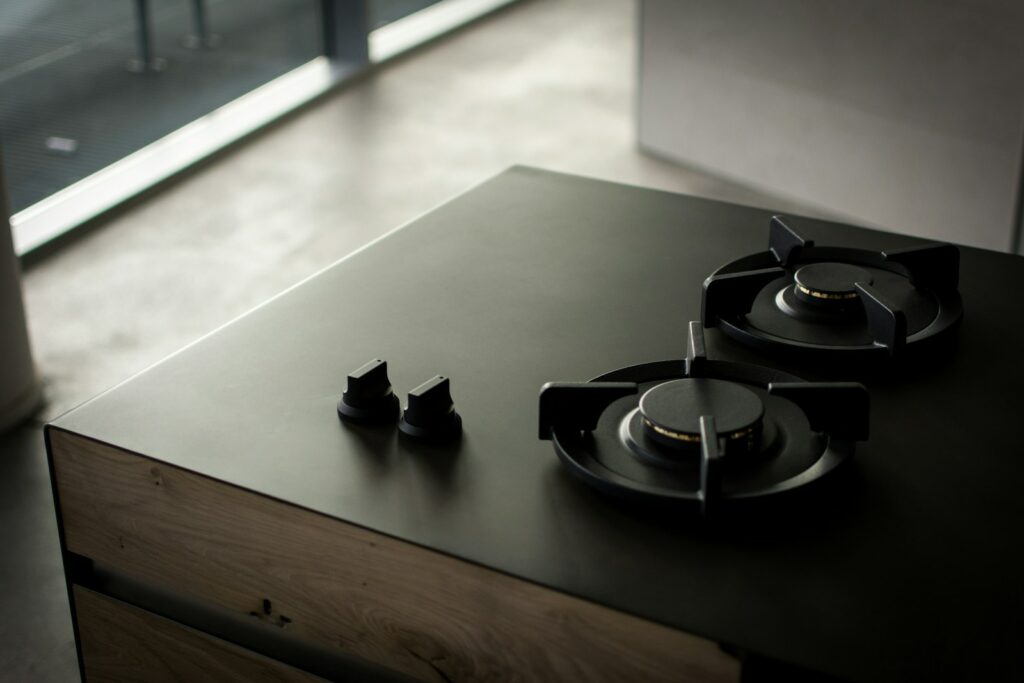
Keeping your stovetop spotless can be a challenge, especially with the buildup of grease and grime over time. However, with proper maintenance, you can maintain the protective coatings on your stovetop and keep it looking like new for years to come.
One of the best ways to prevent damage to protective stovetop coatings is by regularly removing grease buildup. Here are some effective methods for grease removal:
- Use a vinegar and water solution to break down grease and grime. Mix equal parts vinegar and water in a spray bottle and spritz it on your stovetop. Let it sit for a few minutes, then wipe it clean with a microfiber cloth.
- Try using a baking soda paste to scrub away stubborn grease stains. Mix baking soda with a small amount of water to form a paste, then apply it to the affected area. Use a soft-bristled brush to gently scrub away the grease, then rinse with water.
- Invest in a quality degreasing cleaner specifically designed for stovetops. These products are formulated to dissolve tough grease and grime, making cleaning a breeze.
It’s important to remember that regular cleaning and maintenance is key to keeping your stovetop protective coatings in top condition. By incorporating these grease removal methods into your cleaning routine, you can ensure that your stovetop remains clean and protected for years to come.
Questions & Answers for Grease Removal: Keeping Your Stovetop Spotless
How can I effectively remove grease from my stovetop?
The best way to remove grease from your stovetop is by using a mixture of vinegar and water. Simply spray the solution onto the greasy areas and wipe it off with a clean cloth.
Are there any commercial products that work well for grease removal?
Yes, there are several commercial degreasers specifically designed for stovetop cleaning. Look for a product that is safe to use on your type of stovetop and follow the manufacturer’s instructions.
What should I do if grease has built up over time and is difficult to remove?
For built-up grease, you can try using a paste made from baking soda and water. Apply the paste to the greasy areas and let it sit for a few minutes before scrubbing it off with a sponge.
Is it important to clean grease from my stovetop regularly?
Yes, it’s important to regularly clean grease from your stovetop to prevent a buildup that can become difficult to remove. Regular cleaning also helps to maintain the appearance and functionality of your stovetop.
Can grease buildup on my stovetop be a fire hazard?
Yes, excessive grease buildup on a stovetop can pose a fire hazard, as it is flammable. Keeping your stovetop clean and grease-free is an important safety measure.
What are some preventative measures I can take to minimize grease buildup on my stovetop?
One preventative measure is to use a splatter guard while cooking to minimize the amount of grease that splatters onto your stovetop. Additionally, wiping down your stovetop after each use can help prevent grease buildup.
Is it safe to use harsh chemicals for grease removal on my stovetop?
It’s best to avoid harsh chemicals on your stovetop, as they can damage the surface. Stick to gentler, natural cleaning solutions to avoid causing any harm.
Can I use vinegar alone to remove grease from my stovetop?
While vinegar can be effective for removing light grease, it may not be as effective for heavy buildup. It’s best to use a combination of vinegar and water or a commercial degreaser for more stubborn grease.
How often should I deep clean my stovetop to remove grease?
For best results, aim to deep clean your stovetop at least once a month to remove any accumulated grease. In between deep cleanings, wiping down your stovetop after each use can help prevent excessive buildup.
Are there any professional services available for stovetop grease removal?
Some cleaning services may offer stovetop cleaning as part of their services. If you’re unable to remove tough grease buildup on your own, it may be worth considering hiring a professional to do the job for you.
The Conclusion
So there you have it, folks! With these tips and tricks, keeping your stovetop spotless and free of grease doesn’t have to be a daunting task. Whether you prefer using natural cleaning solutions or trusty store-bought products, the key is consistency and a bit of elbow grease (pun intended). Say goodbye to sticky messes and unsightly grease buildup, and hello to a sparkling clean cooking surface that will have you feeling like a kitchen champ. Happy cleaning!
